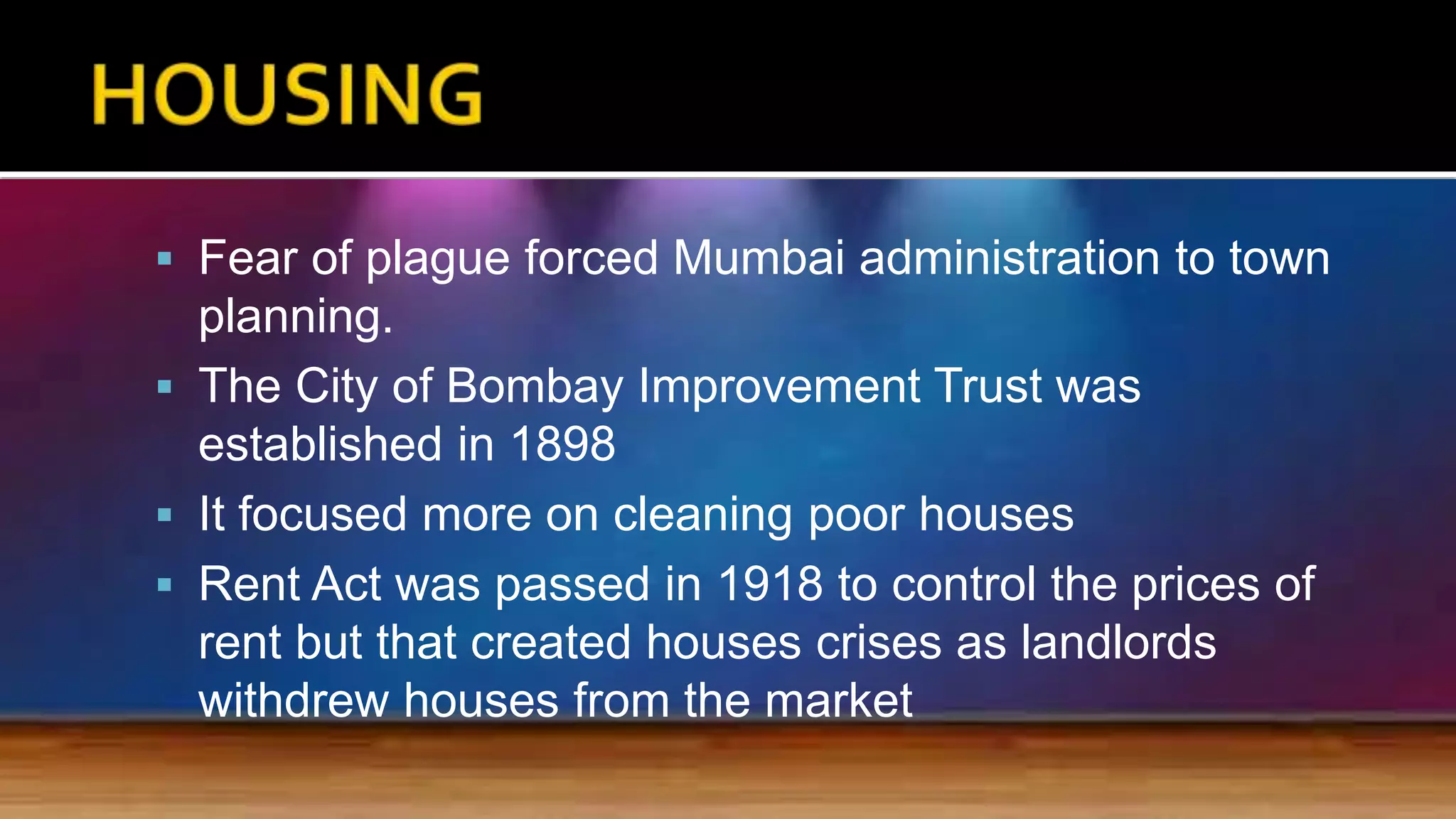The document provides details about the history and development of Mumbai (formerly known as Bombay), India. It discusses how the city originated as seven islands gifted to Britain and developed as a key port and trading center under the East India Company. It describes the dense and unplanned living conditions in the city, particularly in multi-story tenement buildings called "chawls." It also outlines some of the early urban planning efforts and land reclamation projects that helped expand the city. Finally, it notes how Mumbai became the national center of the Indian film industry.














